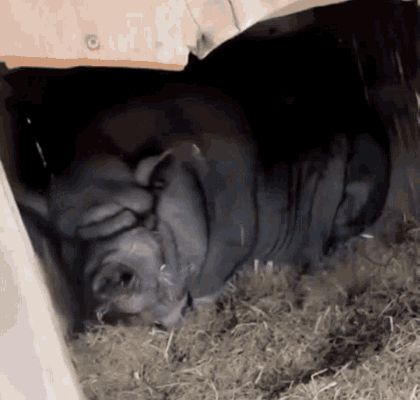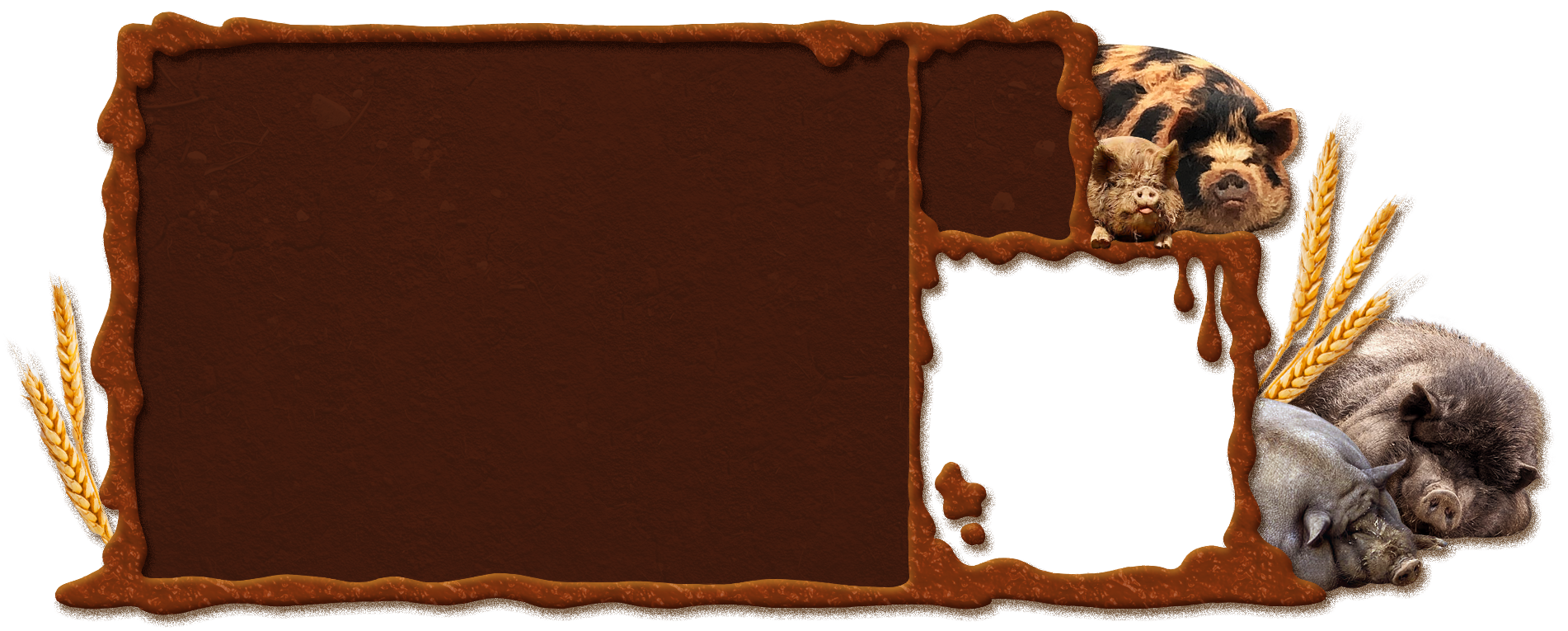making me happy. here's something i wrote about 豬八戒 (zhu bajie) and chinese pig breeds!
what kind of pig is zhu bajie?
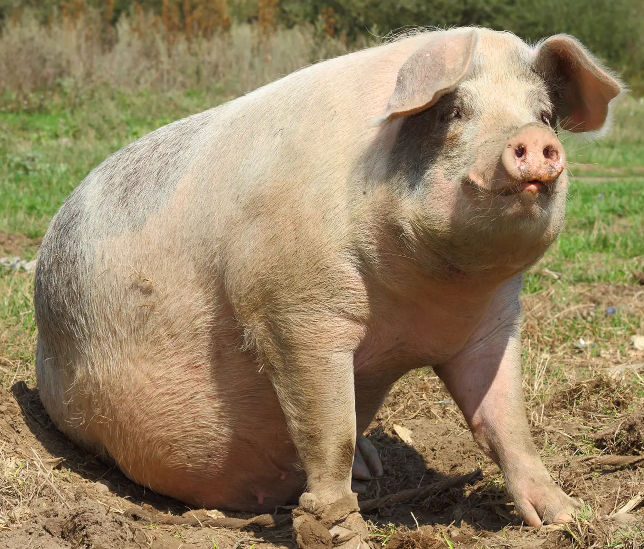
it’s the question on everyone’s mind: what kind of pig is zhu bajie? does he have a real-world counterpart? what's changed about his appearance over the years? on this page, i take a trip through chinese history and pig zoology to find the answers!!
so… what comes to mind when you think of zhu bajie? a thin-furred, pink guy with a short snout, impressive paunch and erect ears akin to that of a yorkshire or landrace pig? let’s explore how well this depiction reflects zhu in the novel, and what comparisons can be drawn between his written form and the chinese breeds of pig we know today! starting from the very beginning: the northern chinese boar.
the northern chinese boar is an ancient subspecies of wild boar considered to be the ancestor of domestic pigs. the pig was one of first domesticated animals in china, preceded only by dogs, and contributed massively to the subsequent agricultural societies across east asia. though used for meat, they quickly became symbols of personal wealth, luck and success. this domestication occurred almost 10,000 years ago.
The word for “home” in Chinese is a pictograph of a roof with a pig beneath. The roof was, of course, essential to any dwelling built above ground. A pig in an abode, however, was peculiar to China. Throughout most of China's history, even in the twentieth century, the pig has been the most prized source of meat, butchered and eaten on ceremonial or sacrificial occasions by even the most humble people. For that reason, the lowly peasant made every effort to protect the creature from theft and allocated space for it within his house.
Charles Benn
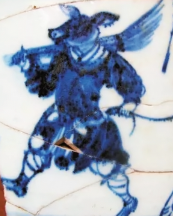
but this stuff is merely laying the groundwork for figuring out zhu’s true form, as zhu bajie first emerged in the 14th century, long after pigs had been domesticated. he was a late addition to the journey of the west story cycle, being absent from the precursor story 大唐三藏取經詩話 (tang sanzang's poems on the collection of scriptures) and first appearing on various ceramics and stone pagodas. here, he is depicted as a pig-headed man with large, erect ears spread on both sides of his head. sometimes he is seen with a minimalist impression of fur, but often appears to be human-skinned and pale.
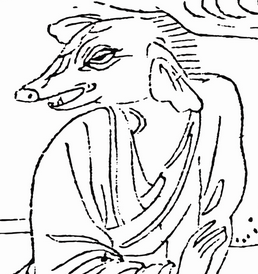
he is also depicted in a 15th century book as having a thin, long snout and a wrinkled face with lop ears, much like a chinese taihu pig.
here we arrive at the journey to the west and start to examine how zhu bajie canonically appears in the 16th century text. this is how we're going to pick out the perfect pig to represent him!
his first description in the novel is a poem that immediately distances him from the popularised pink pig we know today, giving him the presence and effect of a menacing beast rather than something round and friendly-looking:
Lips curled and twisted like dried lotus leaves;
Ears like rush-leaf fans and hard, gleaming eyes;
Gaping teeth as sharp as a fine steel file’s;
A long mouth wide open like a fire pot.
then, in chapter 18, we get some concrete substance to draw from:
“Well,” said old Mr. Gao, “when he first came, he was a stout, swarthy [黑; lit. “black”] fellow, but afterwards he turned into an idiot with huge ears and a long snout, with a great tuft of bristles behind his head. His body became horribly coarse and hulking. In short, his whole appearance was that of a hog! And what an enormous appetite!”
When the violent gust of wind had gone by, there appeared in midair a monster who was ugly indeed. With his black face covered with short, stubby hair, his long snout and huge ears, he wore a cotton shirt that was neither quite green nor quite blue.
a black face, a long snout, a mane of bristles, and huge ears. now to match these features to a real-world pig!
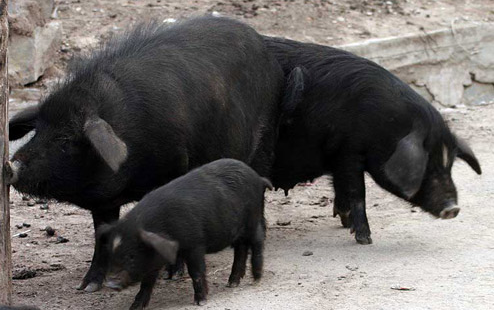
funnily enough, the majority of native chinese pigs (beijing black pigs, hezuo pigs and kele pigs to list a few) have black skin and fur. zhu bajie’s real colouration was hiding in plain sight this whole time! but we have more to examine than just the shade of the hog.
beijing black pigs are a strong, rugged breed found throughout china. their ears are large and their fur is strikingly dark, but they lack the bristles and long snout needed to match zhu bajie.
meanwhile, hezuo pigs are found at high altitudes and as a result are well adapted to cool temperatures, with long and dense bristles lining their backs. however, pigs with large ears are rarely able to hold them erect, making it logically likely that zhu would have lop ears hanging over his face. hezuo pigs have short ears, similar to that of a wild boar.
kele pigs have lop ears, but they keep themselves warm with exceptionally thick fat, not fur and bristles. wuzhishan and ningxiang pigs have white underbellies, unlike zhu. taihu pigs are covered in wrinkles and fat folds.
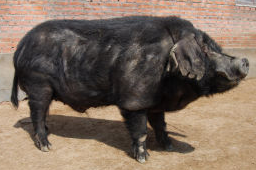
overall, the breed of chinese pig that most closely resembles zhu bajie is the minzhu pig, a prolific species from the far north that is notable for its long, black hair. this hair has coarse, long bristles and a dense woollen undercoat in the winter, serving as insulation in the cold and dry climate of the middle temperate belt - a dead ringer for zhu bajie’s impressive mane and furry face. they also have long, lop ears and a broad snout embedded with sharp teeth; they’re able to survive on coarse feeds.
but wait… bristles? fangs? a long snout?
could zhu bajie be a boar?
though thrust from heaven, born from the womb of a sow and raised on a farm, zhu bajie is not explicitly stated to be a domestic pig. in fact, whether he is referred to as a “pig”, “hog” or “boar” varies from translation to translation! so is it possible that zhu bajie could be a wild boar?
throughout the novel, there is heavy emphasis on zhu’s sharp mane of bristles. it's such a prominent and iconic feature, in fact, that he took it as his name!
My family is located in the Cloudy Paths Cave of Fuling Mountain; my surname is based on my appearance. Hence I am called Zhu [豬; lit. “Hog”], and my official name is Bajie. [剛鬣; lit. “Stiff Bristles”]
pigs can be bristled, but boars often boast much more impressive heads of hair. they are also far more famous for having fur than pigs are, which are often thought to be entirely hairless - though this is a misconception. a passage in volume 4 also reveals the impressive length of zhu's snout:
A snout, pestlelike, over three feet long
And teeth protruding like silver prongs.
Bright like lightning a pair of eyeballs round,
Two ears that whip the wind in hu-hu sound.
Arrowlike hairs behind his head are seen;
His whole body’s skin is both coarse and green. [青; lit. “black”]
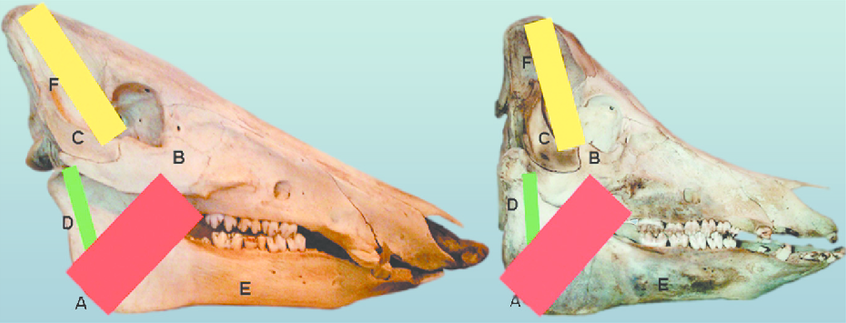
boars commonly have much longer snouts than domestic pigs, with their skulls built significantly longer and their muscle mass concentrated around their head and shoulders. pigs, meanwhile, have their body weight concentrated on their posterior. most wild boars’ heads take up one-third of their entire body length, which would explain the frankly insane length of zhu bajie’s face (over 90cm!) in comparison to the rest of his body.
boars are also known for their well-developed canine teeth, with males’ fangs often protruding from their jaws as tusks.
so if zhu is a boar, what kind of boar is he?
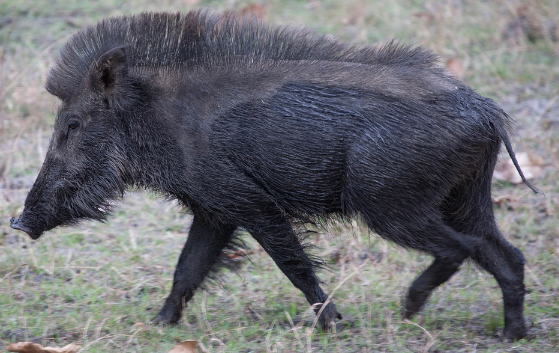
a subspecies of boar that immediately springs to mind when reading zhu’s descriptions is the indian boar, a dark and sharp-featured swine whose mane runs in a crest along its back. certainly, its jagged bristles inspire such descriptions as “arrowlike” and “swordlike”, but the species has a lighter build. it lacks zhu’s impressive ears, and most importantly: it’s native to southeast asia, not china.
looking at chinese subspecies, it’s difficult to say which would best reflect zhu bajie. interestingly, eastern subspecies of boar largely don’t grow manes and are often an earthy brown in colour, with small ears that stand erect at the tops of their heads. the closest comparison is the ussuri boar, largest of the wild boars (up to 500 pounds!) and recognizable by their pointed ears and neck manes. however, their fur is far too light for the black-faced pig-man of legend.
so what gives? if zhu isn’t quite a pig and isn’t quite a boar, what is he?
conclusion!
the pig that resembles zhu bajie best is a feral hog - a minzhu pig that has undergone morphological changes in response to being released into the wild!
any pig that escapes into the wild can revert in a matter of months to a state where they can survive easily, growing thicker fur and longer tusks and becoming far more aggressive. this is due to a phenomenon called epigenetics, where a change of scenery (increase of danger, reduction of nutrients) will kick off the production of important chemicals in the body to help an animal survive. in a pig’s case, this is testosterone, which also causes physical changes!
to be clear: this isn't a domestic pig turning into a wild boar!
what’s extra fun about this conclusion is that it not only reflects zhu’s appearance - combining the fearsome, savage nature of a boar with the iconic charm of a domestic pig - but his behaviour and narrative as well! in animals, testosterone plays a large part in aggression and sexual desire, and zhu bajie is well known for his lust. he was also banished from the heavens to live a life on earth, which could be interpreted as letting him loose in the wild!
sources!
